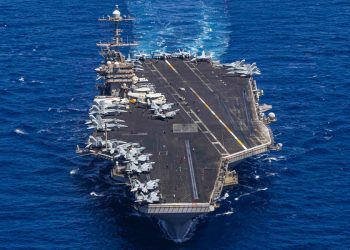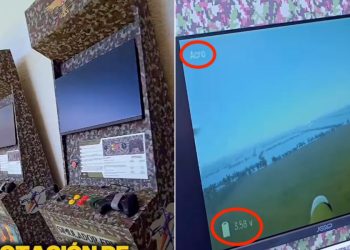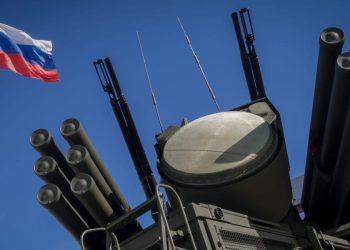- USS Bataan is about to undergo a major overhaul to carry F-35B Lightning II stealth fighters.
- The flight deck will be completely revamped for vertical takeoff, giving the Bataan a major air combat capability.
- The Bataan will be “the most advanced amphibious warship in the Navy,” a senior officer said.
USS Bataan just finished a lengthy deployment in Middle Eastern waters that took it into the ongoing Red Sea fight, but it’ll soon be headed to the shipyard for a major overhaul.
The amphibious assault ship, currently docked in New York City for Fleet Week 2024, will undergo work to carry F-35B Lightning II fighter jets. The upgrade will be “game-changer” for the capabilities and future operations of the ship, a senior officer said.
Envisioned as an option to project US power in a more distributed force, namely across the Pacific, the lightning carrier doesn’t carry as many fighters as an aircraft carrier like the USS Gerald R. Ford — at most 20 compared to more than 50 — but it’s less expensive than building an entirely new aircraft carrier and flexes a better versatility thanks to its other capabilities.
Such a conversion process, though, will keep the Bataan in the shipyard for more than 600 days. “We have to completely revamp the flight deck,” Capt. Trace Head, the ship’s executive officer, told Business Insider this week, explaining that “the electrical demand is different from any aircraft that we have on board.”
US Navy photo by Mass Communication Specialist 2nd Class Chandler Harrell
“As we transition from the Harrier to the F-35 on these ships, there’s certain maintenance things that have to be done, and that’s all planned and programmed,” Marine Forces Command leader Lt. Gen. Brian Cavanaugh said.
Perhaps the largest rework will involve making sure that the Bataan can withstand the F-35B’s unique vertical takeoff process, which produces intense heat that can damage the flight deck. The B variant of the F-35 is designed for short takeoffs and vertical landings, eliminating the need for catapult launch systems like those on US Navy Nimitz- and Ford-class aircraft carriers.
The upgrade will allow the Bataan to bring a limited force of fifth-generation F-35s into a fight while also maintaining key amphibious assault capabilities. These ships are smaller and more versatile in their missions.
Once the Bataan is effectively set up to carry F-35s, “the capability that we will bring, especially from an air-to-air standpoint with the F-35s, will be incredibly advanced,” Head said. “It’s something that will be a game-changer.”
Cpl. Ken Kalemkarian/released
The idea of a lightning carrier has roots in the “Harrier carrier” concept, which the Bataan notably employed in Iraq in 2003. Experts have debated how useful a lightning carrier would be in a conflict against a great power, such as China, but certain US allies, such as Australia, Japan, and South Korea, are moving full-steam ahead with similar concepts. Those programs are in various stages.
One major benefit of a lightning carrier is the F-35B’s array of sensors, which allow the jet to act as a battlefield hub and relay information to friendly forces across a wide area.
US Navy
The transition to the F-35 fighter jets from the older Harrier jump jets could change which missions the Bataan goes out on and potentially for how long.
The big-deck amphib was in the Red Sea this past fall, deterring threats and projecting US power in the area as the US and its partners engaged with Houthi forces in the area. At that time, the Bataan didn’t bring as much applicable combat power to the fight.
“There’s absolutely no question about” whether the F-35 would’ve completely changed how the Bataan entered that conflict, Head said. “We might still be there if we had F-35s on board.”
Cavanaugh noted that the F-35 upgrade will be a “significant jump” from other aircraft, presenting new capabilities and challenges for the force. “As we get increased technologies” and incorporate them, he said, “it’s a stronger deterrent all across the globe.”
Lockheed Martin
It remains to be seen where the Bataan will go once it returns to the force, suspected to be around May 2026. But for Head, thinking about what the ship, with its new capabilities, will bring to the force is an exciting prospect.
“The next deployment, we will be the most advanced amphibious warship in the Navy coming out of the shipyard,” he said.










